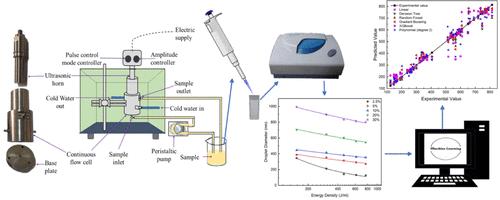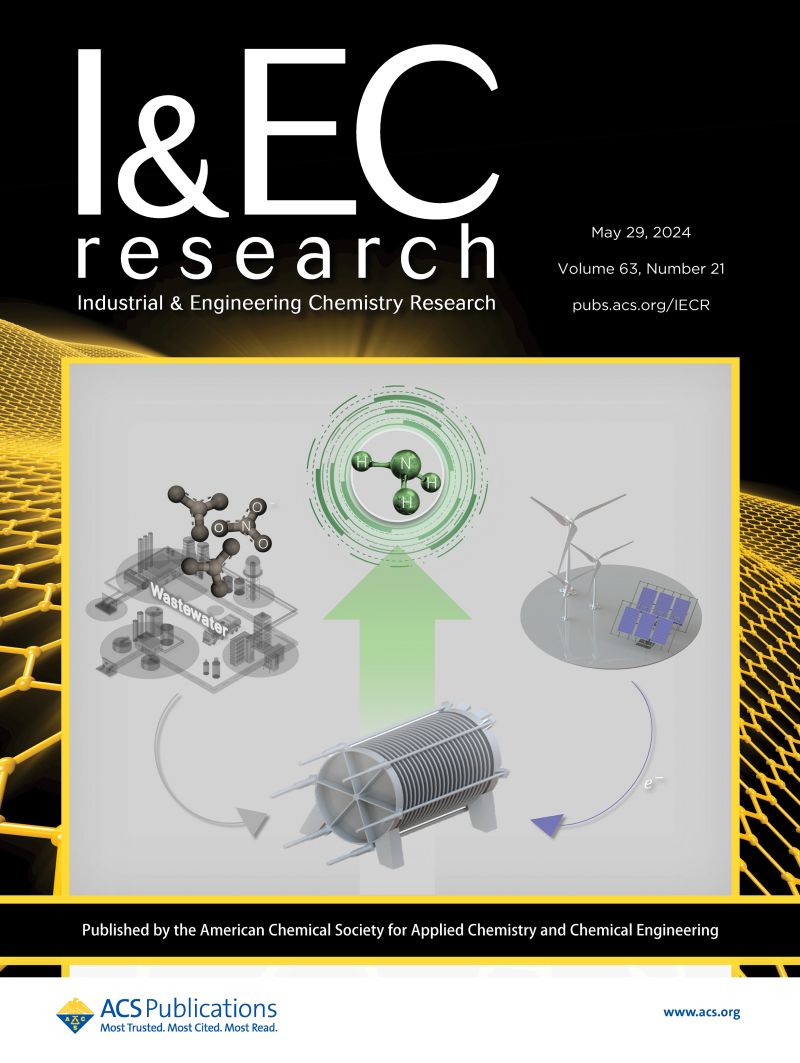Enhanced Nanoemulsion Engineering through Continuous Ultrasonication and Integrated Machine Learning Algorithms
IF 3.8
3区 工程技术
Q2 ENGINEERING, CHEMICAL
引用次数: 0
Abstract
Ultrasonic flow reactors of modest size have become increasingly favored by researchers due to their utility as a valuable medium for investigating and regulating the operating mechanism of ultrasound technology. As a result, these reactors are employed for both research and a variety of applications in chemical, biological, and pharmaceutical processes, predominantly on laboratory scales and occasionally on pilot scales. Herein, an ultrasonic continuous-flow cell assembly (UCF) is utilized for the formulation of oil-in-water nanoemulsions (o/w NEs). The setup provides efficient energy input, inducing strong cavitation for effective droplet fragmentation and ensuring continuous o/w NEs production. The emulsification process is optimized by adjusting parameters (amplitude, pulse control mode, processing time, oil-to-surfactant ratio (OSR), and stability) supported by machine learning-based data analysis. At unit OSR, Dz-avg measures 124 nm, compared to 832 nm at OSR 12. At the optimal OSR, NE remains stable for 50 days; at higher OSR, coalescence and Ostwald ripening instabilities are observed. Optimized OSR is found to be 4 at optimal ultrasonic conditions. Higher surfactant concentration reduced Dz-avg, while increased oil concentration raised Dz-avg. A significant decrease in Dz-avg is observed up to 459 J/mL energy density, thereafter Dz-avg declined slowly. The Dz-avg prediction, modeled with energy density, exhibited a strong power law fit and is applicable for both scaling up and adjusting Dz-avg. This study proposes a standard process for formulating o/w NEs through an efficient continuous emulsification method. It offers valuable insights into optimizing emulsion formulation via ultrasonic cavitation techniques, contributing to scalable production in diverse industrial sectors.

通过连续超声和集成机器学习算法增强纳米乳工程
中等尺寸的超声反应器作为研究和调节超声技术运行机制的一种有价值的介质,越来越受到研究人员的青睐。因此,这些反应器被用于化学、生物和制药过程的研究和各种应用,主要是在实验室规模上,偶尔也在中试规模上。本文利用超声连续流电池组件(UCF)制备水包油纳米乳液(o/w NEs)。该装置提供了高效的能量输入,产生了强烈的空化作用,从而有效地破碎液滴,并确保连续生产0 /w的ne。在基于机器学习的数据分析支持下,通过调整参数(振幅、脉冲控制方式、处理时间、油与表面活性剂比(OSR)和稳定性)来优化乳化过程。在单位OSR下,Dz-avg的测量值为124 nm,而OSR为12时为832 nm。在最佳OSR下,NE在50 d内保持稳定;在高OSR条件下,观察到聚结和奥斯特瓦尔德成熟不稳定性。在最佳超声条件下,优化后的OSR为4。表面活性剂浓度越高,Dz-avg越低,油浓度越高,Dz-avg越高。当能量密度达到459 J/mL时,Dz-avg显著下降,此后Dz-avg缓慢下降。以能量密度为模型的Dz-avg预测具有较强的幂律拟合性,适用于Dz-avg的放大和调整。本研究提出了一种通过高效连续乳化法制备o/w内酯的标准工艺。它为通过超声空化技术优化乳液配方提供了有价值的见解,有助于在不同工业部门的规模化生产。
本文章由计算机程序翻译,如有差异,请以英文原文为准。
求助全文
约1分钟内获得全文
求助全文
来源期刊

Industrial & Engineering Chemistry Research
工程技术-工程:化工
CiteScore
7.40
自引率
7.10%
发文量
1467
审稿时长
2.8 months
期刊介绍:
ndustrial & Engineering Chemistry, with variations in title and format, has been published since 1909 by the American Chemical Society. Industrial & Engineering Chemistry Research is a weekly publication that reports industrial and academic research in the broad fields of applied chemistry and chemical engineering with special focus on fundamentals, processes, and products.
 求助内容:
求助内容: 应助结果提醒方式:
应助结果提醒方式:


